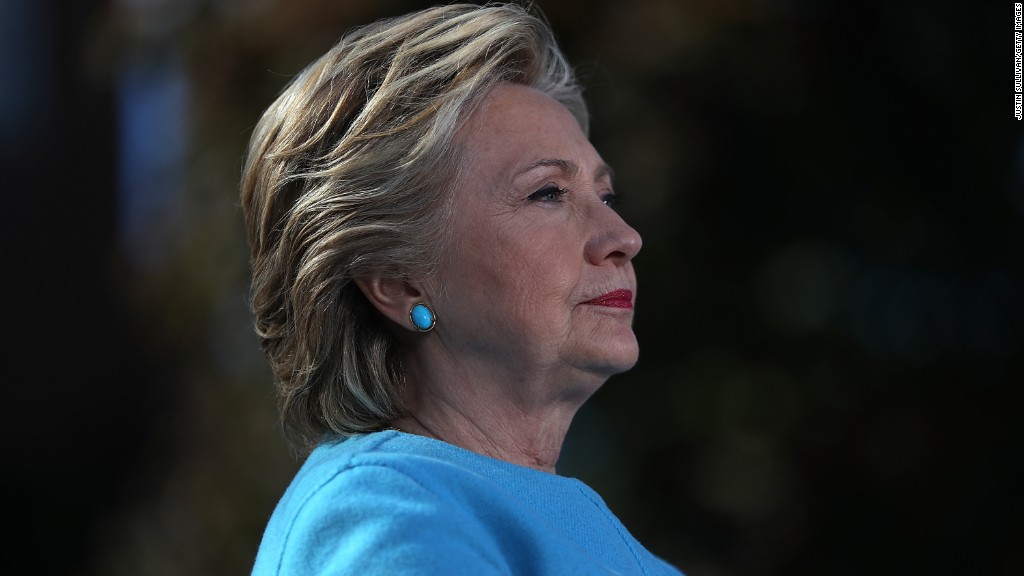
A model that has correctly predicted the winner of every U.S. presidential race since Ronald Reagan in 1980 is forecasting a big victory for Hillary Clinton.
Clinton is expected to get 332 electoral votes, while Trump is predicted to get just 206, according to the Moody's Analytics model, which is based on three economic and three political factors.
Overall, the U.S. is growing and that favors Clinton. Most Americans can feel their pocketbooks getting better. Moody's predicts key swing states -- Florida, Ohio, Colorado and Pennsylvania -- all going blue this year.
But here's what really tips the model heavily toward Clinton: Cheap gas and President Obama's high approval rating.
"Even those who don't have a car typically pass a gas station and see prices dropping or falling of a daily basis," writes Dan White, a senior economist at Moody's, who worked on the model for the 2016 election.
Related: This stock market test points to a Trump win
Gas prices are down, while American incomes and home prices have been rising. At the end of the day, that means a lot of people are better off than they were a few years ago.
The other deciding factor this year is President Obama. Many see Clinton as an extension of President Obama's policies. Right now, that's a good thing. His approval rating has surged this year to 55%.
"Historically, no incumbent president since Ronald Reagan in 1988 has had a surge anywhere close to [Obama's] magnitude in their eighth year in office," notes White.
The economy and Obama's rising popularity are likely to make the difference to those coveted few undecided voters, according to the Moody's model.

Related: The American Dream: Rich are fearful for its survival
The economic factors in the Moody's model are: Two-year change in real household income, real home price growth and gas prices. The political factors are the two-year change in the president's approval rating, political fatigue (some states have a tendency to switch party votes every few yeas), and how Democratic-leaning a state is.
There's just one red flag: This is not a normal election.
The model doesn't account for personalities, only data. As Moody's notes, "It is very possible that voters will react to changing economic and political conditions differently than they have in past election cycles."


